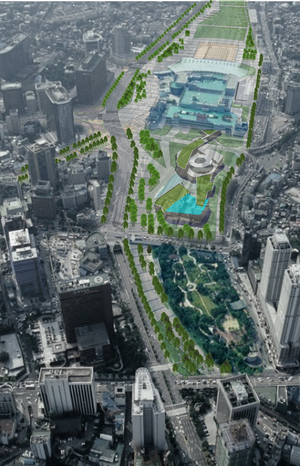
The at-grade rail infrastructure that passes cross the city centre is impeding the flow of other traffic and appears to have discouraged the physical growth of city.
It was reported that there were a number of municipalities in Seoul metropolitan area interested in refurbishing their old rail structures built in the early twentieth by constructing underground passageway below the existing rail route for housing new track and therefore replacing the old at-grade rail system. Note should be taken that these municipal movements has shaped the political agenda referred to as ‘Urban rail refurbishment’ that pledged to implement this blueprint. Whilst there appears to be little doubts about the benefits of the rail refurbishment, the opposing voice does exist due to the astronomical cost required and the risks associated with disrupting train operation. One of the studies that investigated into the feasibility of rail refurbishment project for the 3.2km-long rail segment from the Seoul station (Figures 1 and 2) towards the Han river pointed out that the project requires the tunnelling expertise that would allow a large underground space that could accommodate up to six rail tracks to be constructed with a minimum level of ground displacements and vibrations.
The urban rail refurbishment is a challenging task due to the vulnerable surrounding environment. Further research based on these initial findings would help improving the prospects.



